
British Hussars (Home) Sword Sales For navigation links to various hussar regiment pages, see below
The 3rd King's Own Hussars |
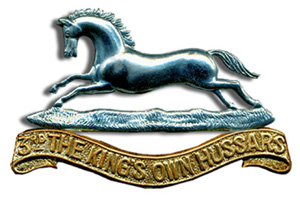 |
The 3rd Hussars were formed in 1685 as the Queens Consort Regiment of Dragoons, their first battle honour was won in Dettingen. The Regiment was out numbered by ten to one so they suffered heavy losses charging French Cavalry. At the Battle of Dettingen on 27 June 1743, the last time that a British monarch led his army into battle, Trooper Thomas Brown of the 3rd Hussars was the last man ever to be knighted on the battlefield for bravery. He gallantly recovered one of the Regiment's standards from the French cavalry. An old print of the time describes the bravery of the trooper.
He had two horses killed under him, two fingers of ye bridle hand chopt off and after retaking the Standard from ye Gen d'Arms, whom he killed, he made his way through a lane of the enemy exposed to fire and sword, in the execution of which he received eight cuts in ye face and neck, two balls lodged in his back, three went through his hat, and in this hack'd condition he rejoined his Regiment, who gave him three Huzzas on his arrival'. Eventually the 3rd overpowered the enemy and forced them from the battlefield. The Regiment managed to retained two Silver kettle Drums which are still teained by the Regiment of today with great pride. 'DETTINGEN' was awarded as a Battle Honour to the 3rd Hussars after the conflict.
The Regiment was active during the Napoleonic Wars, the likes of the Peninsula Campaign front 1808 - 1814.
In later years they were to go to South Africa (about 1900).The Regiment formed part of the 2nd Calvary Division during the first World War War, and fought in the trenches of France and Flanders, During the Campaign the 3rd Hussars were awarded 25 Battle Honours.
The 3rd Hussars were the first Cavalry Regiment to be be re-equipped with tanks and in 1940 they used them in anger. They joined a force of approximately 30,000 men and defeated the Italian Army at Buq Buq.
October 1942, saw the Regiment chosen to spearhead the attack on the German Africa Corps at El Alamein. As part of the 2nd New Zealand Division, the 3rd Hussars fought their most glorious action of the war, from 2 November 1942 they led the charge into the enemy's anti-tank positions, opening up and holding open a wedge, through which, after four days of continuous fighting the rest of the Eighth Army poured. Of the 51 tanks which had been taken into action, 47 had been destroyed and 21 officers an 96 men had been killed or wounded. 'EL ALAMEIN' was awarded as a Battle Honour to both the 3rd and 8th Hussars.
I have been sent some pictures of the 3rd Hussars for inclussion on the site.
Some cap badges
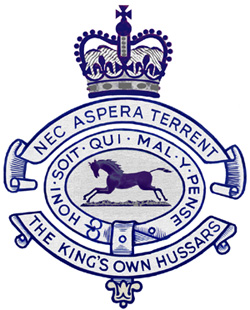 |
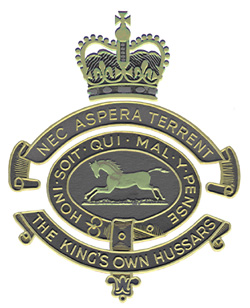 |
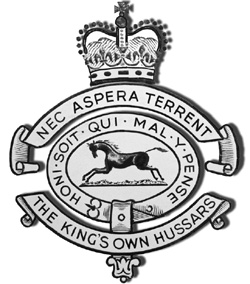 |
3rd Hussars Drum Horse
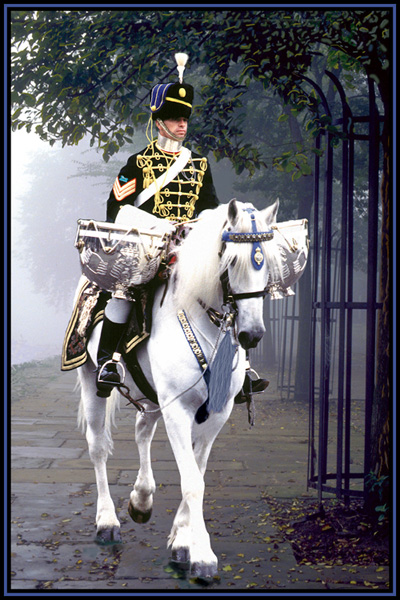 |
In 1943 the Regiment went to Italy where it remained until the end of the War. After the war in 1958 the 3rd Hussars amalgamated with the 7th Hussars.
